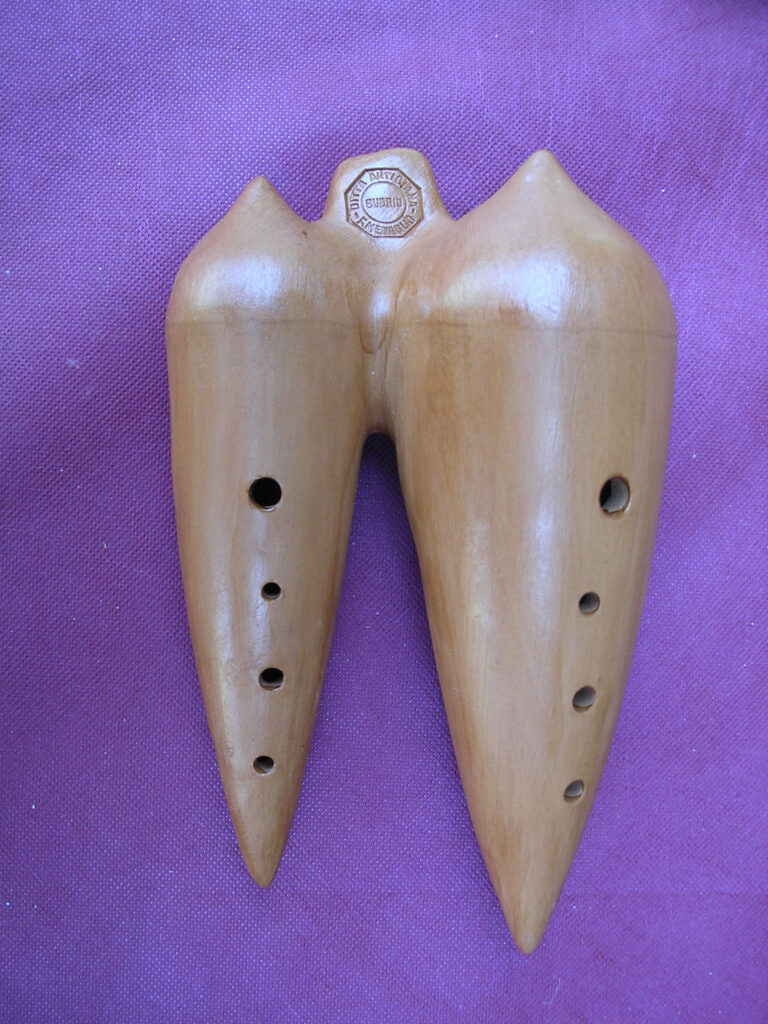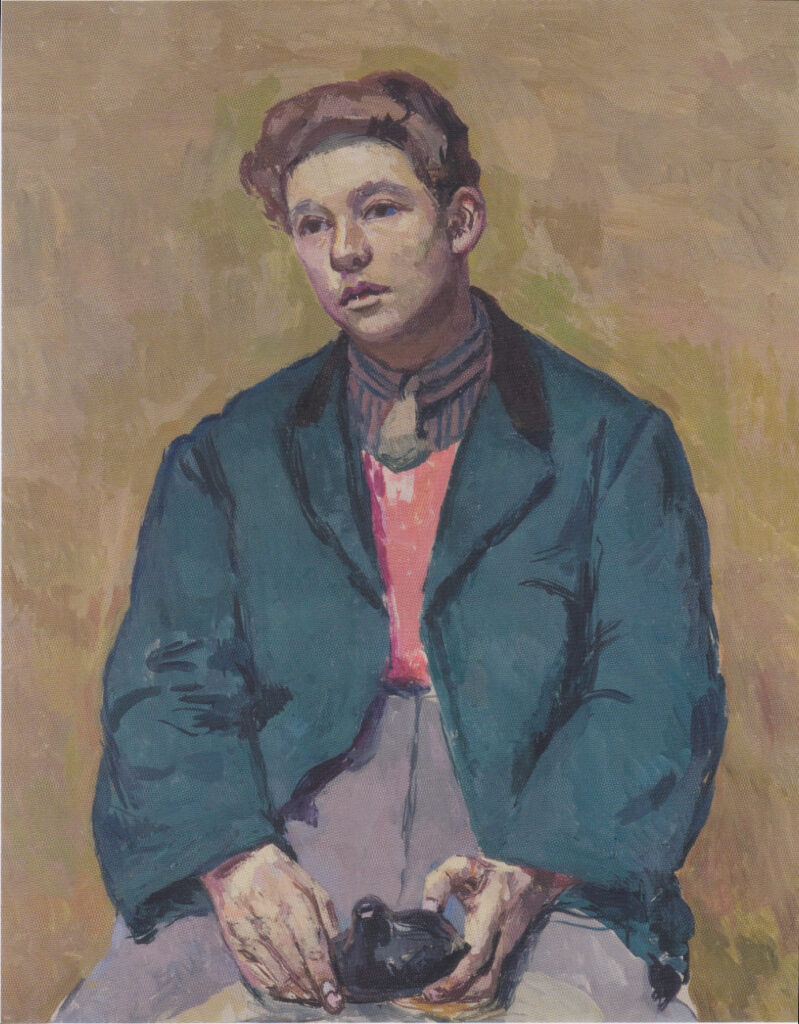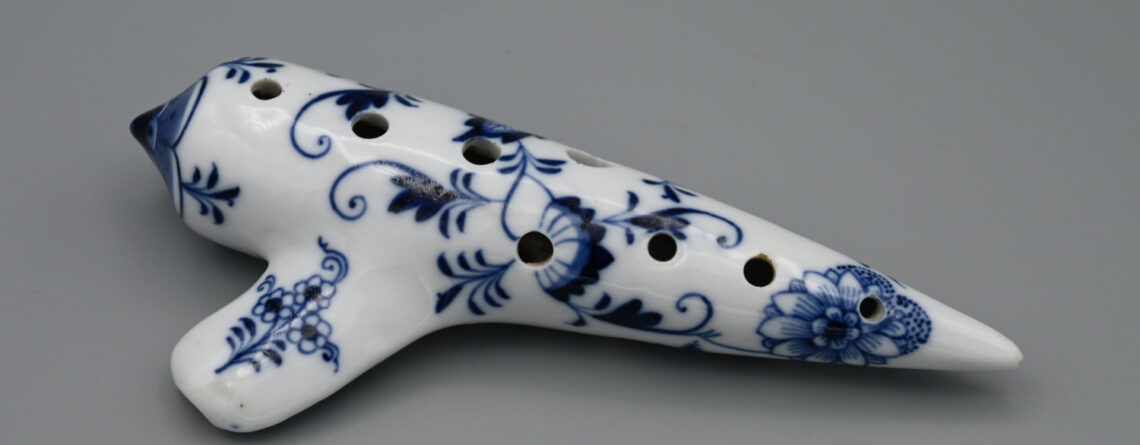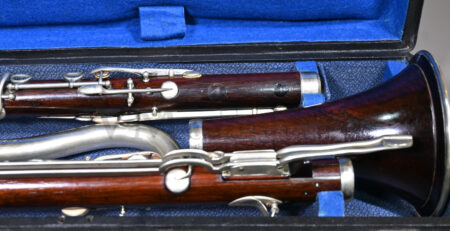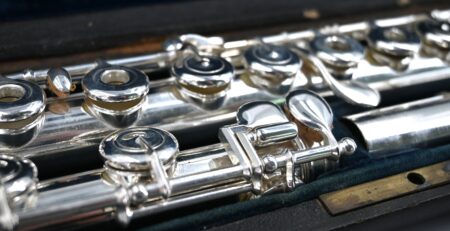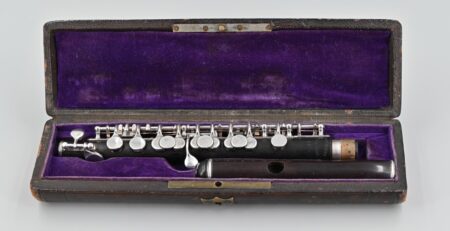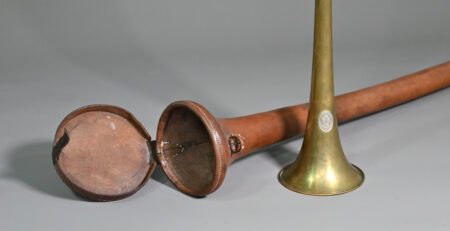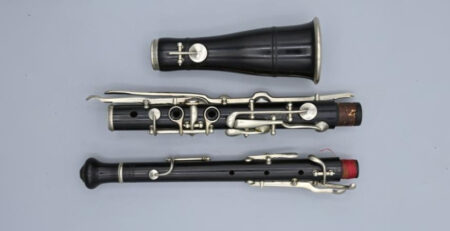Ocarina
So, what is an ocarina? It is the strange name of a wind musical instrument – and means ‘little goose’ in Italian dialect. Also known as a vessel flute, the ocarina’s chamber has between four and twelve tone-holes and also a mouthpiece which usually projects from the flute body. The ocarina was traditionally made from ceramic or clay. However, this instrument was also made from metal, bone, wood, glass or even plastic.
The ocarina belongs to an ancient family of instruments and is thought to date back to over 12,000 years when ocarina-style instruments were very popular in areas that were Mesoamerican (southern North America and Central America) or Chinese. It went on to only be popular as a toy instrument in European communities.
If we fast forward a bit, we discover that our modern European ocarina originates from the 19th century. A young Italian called Guiseppe DONATI (1836-1925) from Budrio, not too far from Bologna, decided to change the toy ocarina into a more complex and comprehensive instrument, inventing thereby the classical ocarina. His was a ceramic wind instrument that used the Helmholtz resonator (another story!) to actually produce sound.
There are a number of different types or styles of ocarinas and they vary in the number of holes and shape. Perhaps the most well-known is the transverse (sweet potato) type like the one DONATI invented. It is normally round in shape and you use two hands to hold it horizontally. It is played by opening one more hole than the previous note in order to ascend in pitch. They tend to have 10 or 12 holes. Their range is between an octave plus a fourth and an octave plus a minor sixth.
There are also pendant ocarinas which are worn as the name says… like a pendant. The fingering for these was invented by the Englishman John TAYLOR in 1964.
Inline ocarinas tend to be oval-shape or rectangular and when played the ocarina points away from the player. The fingering seems to be identical or at least similar to the transverse ocarina fingering.
Things of course had to get complicated… with double and triple ocarinas. These are ocarinas with more than one chamber. So, in other words, two ocarinas are moulded into the same body but there are two separate sets of tone-holes and two mouthpieces. This means that multiple notes can be played at once, expanding the instrument’s range. These multi-chambered instruments can be made transverse, inline or pendant style. A transverse double ocarina plays two octaves plus a minor third. A transverse triple ocarina can play with a range of about two octaves plus a minor seventh.
If that weren’t complicated enough… in the late 19th century, keys and slides were added. This would make it easier for the players to reach certain tone-holes or notes.
What it is clear in the end is…. it’s not a good idea to drop an ocarina. It will probably never be the same again!
